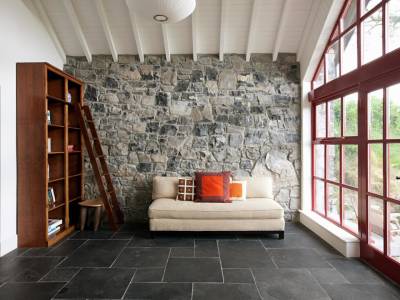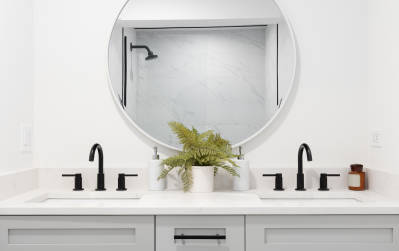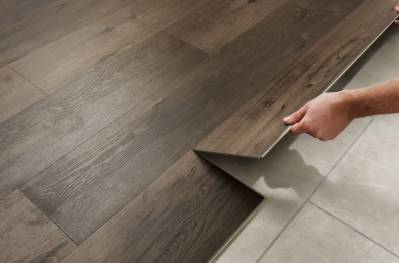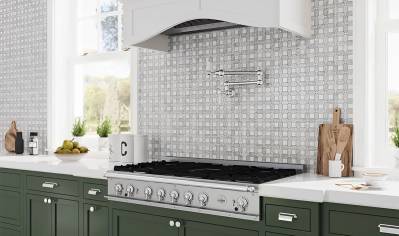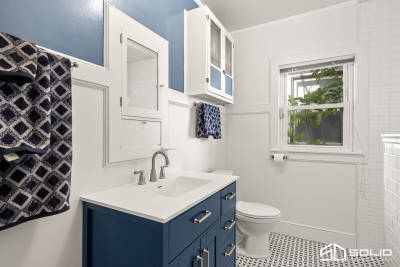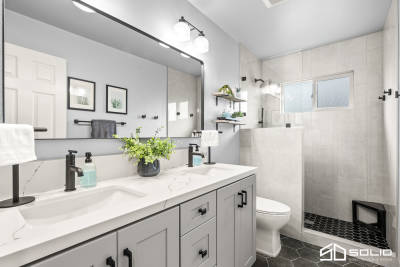If you are planning to remodel your kitchen, bathroom, or entire home interiors, then choosing the right kind of tile can be a crucial decision. Among the wide range of flooring and wall cladding options in the market, ceramic and porcelain tiles are the most preferred choices for homeowners due to their aesthetic appeal and durability. When we talk about porcelain vs ceramic, several factors come into play. This article presents an in-depth comparison of porcelain and ceramic tiles to help you make a more informed decision.
Understanding Porcelain and Ceramic Tiles
Before we dive into the contrasts between porcelain and ceramic, it's crucial to understand what each material constitutes.
What are Porcelain Tiles?
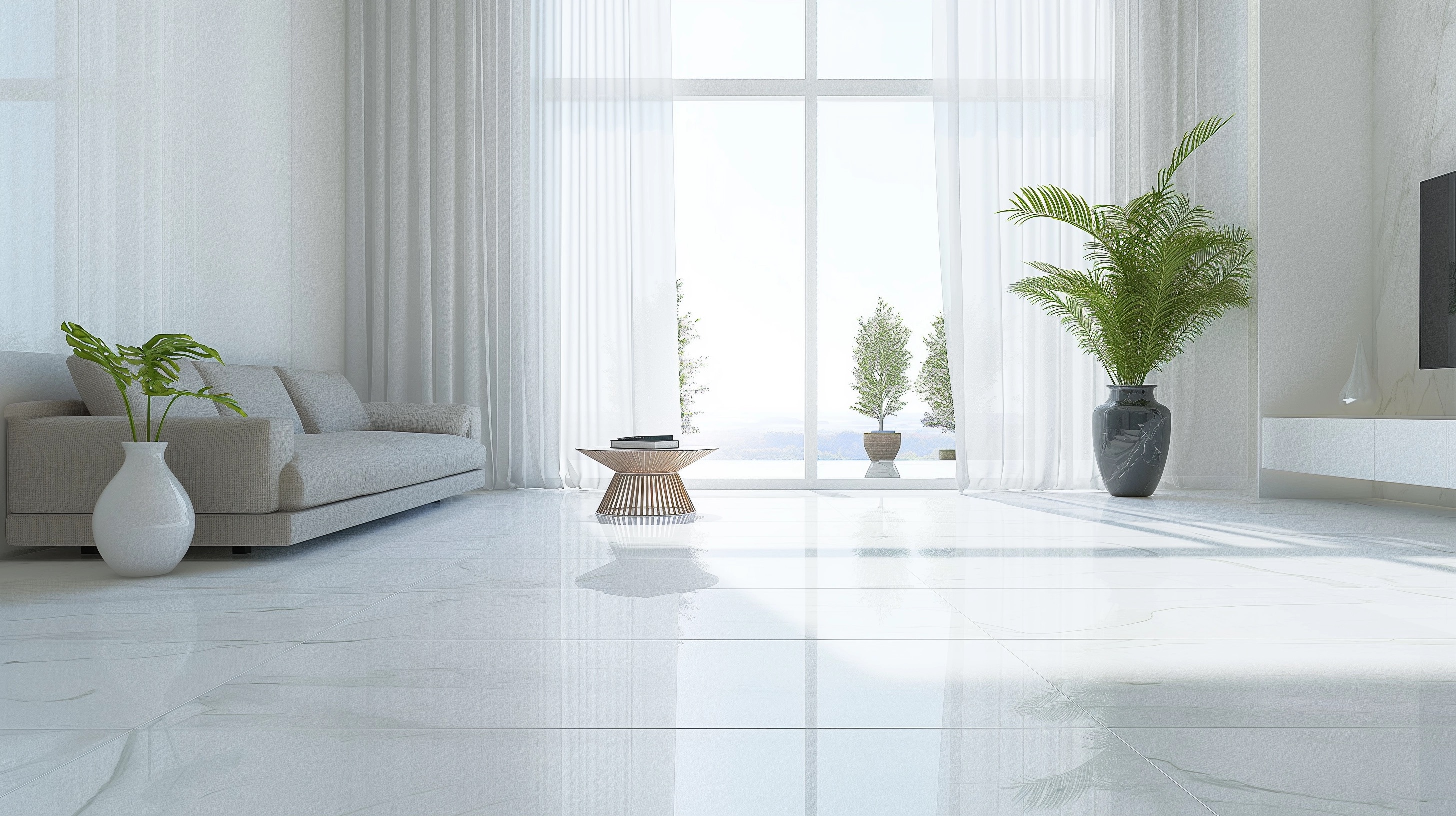
Porcelain tiles are kind of ceramic tiles that are made from a different mixture of clay and minerals fired at higher temperatures. As a result, they become denser, less porous, and more durable than regular ceramic tiles. Due to their low water absorption rate, porcelain tiles are perfect for wet areas such as bathrooms and outdoors.
What are Ceramic Tiles?

Ceramic tiles, on the other hand, are made from a simple mixture of clay and water. These tiles can be either glazed or unglazed, depending on their intended use. Glazed ceramic tiles have a glass-like finish and are stain resistant, while unglazed tiles have a more natural look and are more slip-resistant.
Porcelain vs Ceramic Tiles: A Side-by-Side Comparison
Durability and Longevity
When we compare porcelain vs ceramic, porcelain stands out in terms of longevity and durability. Porcelain tiles are more resistant to wear and tear and can hold up better under heavy foot traffic, making them suitable for commercial installations. They also have a longer lifespan compared to ceramic tiles.
Water Resistance
Porcelain tiles have a significantly lower water absorption rate than ceramic tiles, making them a more suitable option for areas prone to water exposure such as bathrooms, kitchens, and outdoor patios.
Variety and Design Options
Both porcelain and ceramic tiles offer a wide range of design options. You can find them in various colors, patterns, and textures. However, due to their higher density, porcelain tiles can be produced with a more natural and richer appearance, closely imitating natural stone or hardwood.
Care, Maintenance, and Installation of Porcelain and Ceramic Tiles
Installation
Installing both porcelain and ceramic tiles requires a certain level of expertise, but ceramic tiles are generally easier and cheaper to install than their porcelain counterparts due to their lighter weight and lower hardness.
Maintenance
In terms of maintenance, both tile types require regular cleaning with a damp mop or sponge. However, porcelain tiles require less maintenance as they are less likely to stain or absorb water compared to ceramic tiles. Moreover, glazed ceramic tiles are stain-resistant and easy to clean, while unglazed tiles may require sealing to prevent staining.
Repairs
Both porcelain and ceramic tiles are hard and durable, but in case of damage, it's easier to find a matching ceramic tile due to its wide availability and range of designs. On the downside, ceramic tiles are more prone to chips and cracks compared to porcelain tiles.
Cost Comparison: Porcelain vs Ceramic
Cost is one of the significant factors when choosing tiles for your home. Depending on the quality, design, and size, the price of both porcelain and ceramic tiles can vary greatly. However, typically, porcelain tiles are more expensive than ceramic tiles on average due to their higher durability, lower water absorption rate, and more complex manufacturing process.
Is Porcelain or Ceramic Better?
The choice between porcelain and ceramic solely depends on your specific needs, budget, and where you plan to install the tiles. For high traffic and wet areas that demand durability and water resistance, porcelain would be the way to go. However, if you're looking for cost savings and ease of installation, then ceramic tiles would be a viable choice.
It's always advised to consult with a tile expert or interior designer to better understand what will work best in your particular case. Don't rush, take your time to consider all factors and make the right choice between porcelain and ceramic for your home renovation.
Frequently Asked Questions About Porcelain vs Ceramic
What are the main differences between porcelain and ceramic?
The main difference between porcelain and ceramic lies in the materials used, the method of production, and their specific characteristics. Ceramic is generally made using white or red clay which is heated at a certain temperature. Porcelain, on the other hand, uses a specific type of clay called kaolin and is fired at higher temperatures which makes it denser and more durable than ceramic.
Is porcelain more expensive than ceramic?
Yes, generally speaking, porcelain tends to be more expensive than its ceramic counterpart. The higher cost is attributed to the manufacturing process which is more complex and requires higher firing temperatures. This ultimately results in a higher quality and more durable material.
Are porcelain and ceramic tiles the same?
Although both porcelain and ceramic tiles are types of ceramic, they have some differences. As mentioned earlier, the primary distinction comes from the types of clay used and the firing temperatures. Porcelain tiles tend to be denser, more durable and less porous than ceramic tiles making them suitable for both indoor and outdoor use. Ceramic tiles, due to their higher porosity, are best used indoors.
In terms of durability, is porcelain better than ceramic?
Yes, porcelain is generally considered more durable than ceramic. The high firing temperatures and fine clay used in its production result in a more resistant material that can withstand heavy traffic, wear, and tear better than ceramic. However, ceramic can still be a suitable choice for areas with less traffic.
Is porcelain harder to install than ceramic?
Installing porcelain can be a bit more challenging than installing ceramic tiles. Because of porcelain's density and durability, it's more challenging to cut, which can make the installation process more time-consuming and complicated. It is strongly advised to hire a professional for porcelain tile installation.
Can both porcelain and ceramic be used outdoors?
While both porcelain and ceramic can technically be used outdoors, porcelain is more recommended because of its low porosity and high durability. These properties make it more resistant to extreme weather conditions and temperature changes. On the other hand, ceramic, due to its higher porosity, might absorb water, crack or deteriorate faster when used outdoors.
How do I clean porcelain and ceramic surfaces?
Both porcelain and ceramic are easy to clean. For routine cleaning, a damp cloth or mop is sufficient. For deeper cleaning, a mild dish soap or tile cleaner can be used. Avoid using abrasive cleaners or tools as they might damage the glaze on the tiles.
Do porcelain and ceramic have different finishes?
Both porcelain and ceramic are available in a variety of finishes including matte, glossy, textured, and patterned. Your choice of finish depends primarily on your personal preference and where the tile will be installed. For example, a non-slip finish would be a practical choice for bathroom flooring.
What are the environmental impacts of porcelain and ceramic?
Both porcelain and ceramic have their environmental impacts which largely depend on the manufacturing process. The production of ceramic tiles generally consumes less energy than that of porcelain tiles. However, since porcelain is more durable, it may not need to be replaced as often, potentially minimizing its long-term environmental impact.
Pros of Procelain Tiles
Long-lasting Durability
- Porcelain has a reputation for being incredibly hard and dense. This makes it fundamentally robust and resilient against chips, cracks, and general wear-and-tear. Its durability is one reason why many people prefer porcelain for high-traffic areas such as the kitchen or living room.
- Porcelain is very much resistant to strain, making it suitable for commercial installations where traffic is particularly intense. This versatility in usage is an appealing pro for porcelain.
Resistance to liquid absorption
- Porcelain tile's denseness helps it resist water and other fluids. It's a great choice for areas with high moisture levels like bathrooms or kitchens. This water-resistance can prevent staining and water damage over time.
Wide variety of design options
- Porcelain tiles come in a plethora of design options, thanks to modern manufacturing practices. This includes an array of colors and patterns. Furthermore, porcelain tiles can mimic the look of natural stones, hardwood, and other expensive materials, allowing homeowners to obtain high-end aesthetics at a much lower cost.
Cons of Procelain Tiles
High installation costs
- One of the most noteworthy cons of porcelain is its installation cost. Porcelain tiles are harder to cut and install than their ceramic counterparts. As such, professional installation is often required, leading to higher upfront costs.
Cold and hard underfoot
- Porcelain is known for being cold and hard underfoot, which might be uncomfortable for some, especially during colder months.
Pros of Ceramic Tiles
Easy to cut and install
- Ceramic tiles are easier to cut and lay out, making them a good choice for DIY projects. This ease of installation can save on costs, particularly if you plan on self-installing the tiles.
Cost-effective
- Generally, ceramic tiles are less expensive than porcelain tiles. This affordability makes ceramic an appealing option for those working with tighter budgets.
Warm and soft to the touch
- Ceramic tiles can feel warmer and softer underfoot than porcelain, providing added comfort, particularly in barefoot areas like bathrooms and bedrooms.
Cons of Ceramic Tiles
Lesser durability
- Though ceramic tiles are quite durable, they're not as hard or dense as porcelain tiles. Consequently, they are more prone to cracks, chips, and spills and may require more frequent replacement or maintenance over time, particularly in high-traffic zones.
Higher liquid absorption
- Ceramic tiles absorb more water than porcelain tiles due to their porosity. This trait can lead to staining and make ceramic a less ideal choice for moisture-prone environments like bathrooms, kitchens, or outdoor areas.
Lesser design variety
- Ceramic tiles offer fewer design options compared to porcelain. While ceramic can still be found in an array of colors and patterns, it doesn't quite match the versatility found in the array of design possibilities with porcelain.
Summary
When it comes to porcelain vs ceramic, there are key characteristics that set them apart. Porcelain is known for its strength and durability due to its manufacturing process and the high density of its composition. It's less absorbent, which makes it a good pick for high-traffic areas. Ceramic, on the other hand, can be more susceptible to wear and tear and is ideal for less busy areas. However, ceramic tiles are easier to cut and install, making them a favorite among DIY enthusiasts.
The debate around porcelain vs ceramic isn't just about functionality. The aesthetic appeal of the two materials also plays into the decision. While porcelain tends to have a uniform look throughout, ceramic offers a more handcrafted appearance as well as a wider range of color and design options. Its rustic appeal suits a variety of interior designs, from traditional to modern. Porcelain can provide a more sophisticated, sleek look depending on its finish.
When considering the costs involved in porcelain vs ceramic, ceramic usually comes out on top as the more affordable option. Despite porcelain's durability giving it the edge in long-term value, the initial cost is higher. Ceramic's lower price point, combined with its ease of installation, make it a budget-friendly choice for many homeowners. Ultimately, the decision between porcelain and ceramic will depend on your personal preference, design vision, and budget.
About Solid Construction & Design
Welcome to Solid Construction & Design, your premier building and design firm based in sunny Sacramento, CA. With years of experience and a dedication to superior craftsmanship, our team is proud to turn your dream project into a reality. We handle everything from kitchen remodels to home additions, always ensuring extreme attention to detail and a personalized touch. At Solid Construction & Design, our highest goal is achieving your total satisfaction.


